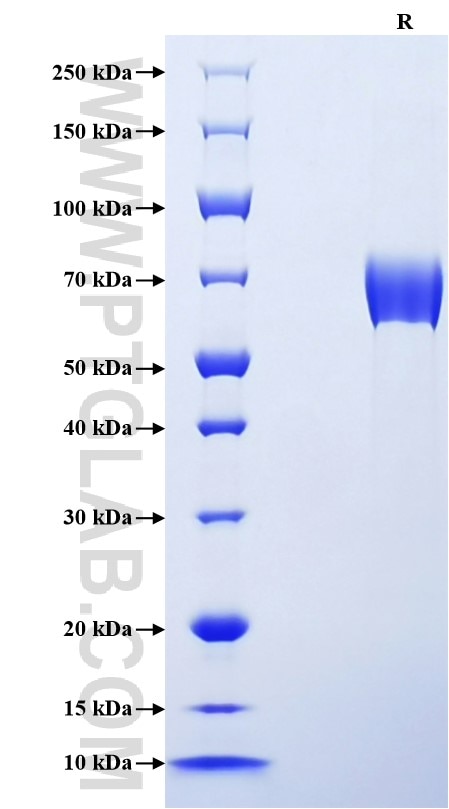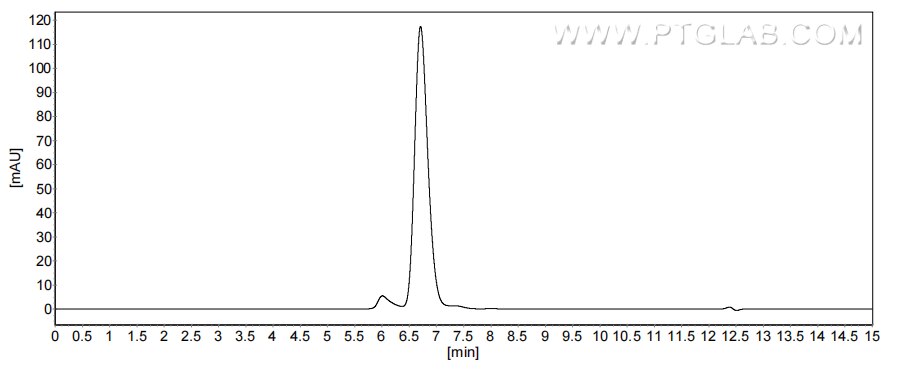Recombinant Human LRG1 protein (rFc Tag) (HPLC verified)
Species
Human
Purity
>90 %, SDS-PAGE
>90 %, SEC-HPLC
Tag
rFc Tag
Activity
not tested
Cat no : Eg3083
Validation Data Gallery
Product Information
| Purity | >90 %, SDS-PAGE >90 %, SEC-HPLC |
| Endotoxin | <0.1 EU/μg protein, LAL method |
| Activity |
Not tested |
| Expression | HEK293-derived Human LRG1 protein Val36-Gln347 (Accession# P02750) with a rabbit IgG Fc tag at the C-terminus. |
| GeneID | 116844 |
| Accession | P02750 |
| PredictedSize | 60.4 kDa |
| SDS-PAGE | 60-75 kDa, reducing (R) conditions |
| Formulation | Lyophilized from 0.22 μm filtered solution in PBS, pH 7.4. Normally 5% trehalose and 5% mannitol are added as protectants before lyophilization. |
| Reconstitution | Briefly centrifuge the tube before opening. Reconstitute at 0.1-0.5 mg/mL in sterile water. |
| Storage Conditions |
It is recommended that the protein be aliquoted for optimal storage. Avoid repeated freeze-thaw cycles.
|
| Shipping | The product is shipped at ambient temperature. Upon receipt, store it immediately at the recommended temperature. |
Background
LRG1, also known as LRG, is a member of the leucine-rich repeat (LRR) family of proteins, containing eight LRR (leucine-rich) repeats and one LRRCT domain. The gene of LRG1 maps to chromosome 19p13.3, and encodes a 347-amino acid protein with a predicted unmodified molecular weight of 38 kD. The mature form of LRG1 is a secreted glycoprotein which has 312 amino acids and an experimentally determined molecular mass of 45 kD. The LRR family of proteins, including LRG1, have been shown to be involved in protein-protein interaction, signal transduction, and cell adhesion and development. LRG1 is expressed during granulocyte differentiation. Levels of the LRG protein are markedly elevated in acute appendicitis and therefore could be used as a diagnostic aid.
References:
1. Camilli C, Hoeh AE, et al. (2022) J Biomed Sci. 29(1):6. 2. Chen C, Zhang J, et al. (2024) Kidney Dis (Basel). 10(3):237-248. 3. Feng J, Zhan J, Ma S. (2021) Bioengineered. 12(1):8897-8907. 4. Hong Q, Zhang L, et al. (2019) J Am Soc Nephrol. 30(4):546-562. 5. He S, Ryu J, et al. (2021) J Clin Invest. 131(24):e148545.

